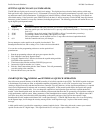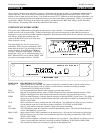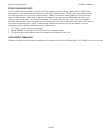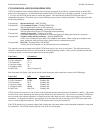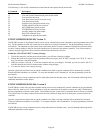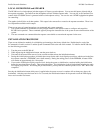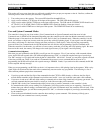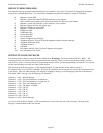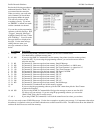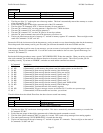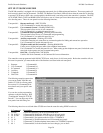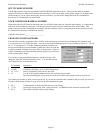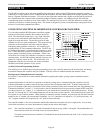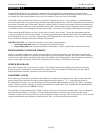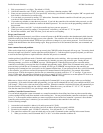
Pacific Research Solutions RI-300e User Manual
Page 33
DEFAULT USER COMMANDS
The controller comes programmed with some default User Commands. See section 13 for details on changing the command
names or the commands themselves. You can use these commands only when the controller is locked in User Mode.
#1 Repeater (system) OFF.
*1 Repeater (system) ON with CTCSS/DCS required to access repeater.
This command does not effect tone squelch requirements for other tone panel features.
*2 Repeater (system) ON with only a carrier needed to access repeater.
*3 Repeater (system) ON and with squelch open.
#4 Repeater CTCSS tone encode OFF.
*4 Repeater CTCSS tone encode ON.
#5 DTMF mute OFF.
*5 DTMF mute ON.
#6 Carrier delay OFF.
*6 Carrier delay ON.
*7 Answer Telephone only if ringing.
*8 Telephone off-hook. You can include the telephone number with this command.
*9 Telephone flash hook switch.
# Telephone on-hook.
#0 Link OFF.
*0 Full duplex link ON, used if you have 2 repeaters tied together.
A (x) Key transmitter on for X time.
SETTING UP YOUR STATION ID
You are now ready to change or set up the station identification,
ID message
. The factory default CW ID is “Hello”. The
following will show you how this ID was programmed into the controller. Once you have reviewed this procedure, you may
want to review section 14 for more details on programming messages before you start programming your own ID. You can also
use this same technique to modify any of the system messages.
Each character of the ID message has a 3-digit command number. See the default CW data table in section 12,
S-Command 31 for a list of all CW commands. The data (CW commands) for all messages are stored in the same memory area
as the macros. Take care when entering a new message or changing a message, to avoid damaging other data in the memory.
The default “Hello” message uses the following CW commands:
Character 1 = 001 Start Of Message
Character 2 = 036 Set Tone Generator 1 to 400 Hz tone
Character 3 = 079 Set Tone Generator 1 to output level 15
Character 4 = 118 Turn Tone Generator 2 off
Character 5 = 212 CW Speed, 16 WPM
Character 6 = 239 CW “H”
Character 7 = 236 CW “E”
Character 8 = 243 CW “L”
Character 9 = 243 CW “L”
Character 10 = 246 CW “O”
Character 11 = 002 End Of Message
As you can see in the above example, all CW commands have a start of message and a end of message. The body of the
message is contained between the start and end.



